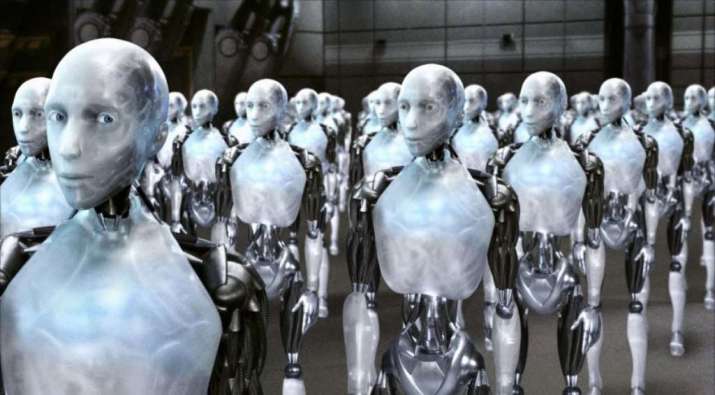
This column explores parallels between the teachings of the Buddha and various aspects of contemporary technologies. This month’s article discusses the field of systemics—often referred to as systems thinking (the theoretical side) and systems engineering (the practical development aspects)—and some related concepts in the Buddhadharma, emphasizing the relevance of this convergence to contemporary thinking, especially in relation to technology ethics.
Technology is considered by some to be the product of calculus and math. From large mechanical systems and infrastructures such as ships and aircraft, bridges and roads, and the software and hardware systems that came into existence only in the last century, we can see many instances of technology changing the world around us for the better.
It is useful, however, to remember that humanity has a very long history, much of which is unwritten and undocumented. This history is underpinned by the use of technology in different forms. Technology has been around for thousands of years and initially it was based on creativity and skill.

The term technology, derived from the Greek terms technē (art, craft) and logos (word, speech), means “a discourse on the arts,” and first appeared in English in the 17th century. At first, it was only used to mean a discussion of the applied arts. It was only in the early 20th century that the term started to be used with reference to means, processes, ideas, tools, and machines. By the middle of the 20th century, technology was defined by such phrases as: “The means or activity by which man seeks to change or manipulate his environment.” (Encyclopedia Britannica)
Understanding technology is critical to our times because most human and social activities nowadays are “technologically mediated,” with larger and increasingly complex technological systems becoming increasingly important and even dominant. This has reached the point where there is a risk that technological mediation could influence the future of humanity in ways beyond our control.

Existential risks come from a number of sources including the development of engineered pathogens, advanced AI, and geoengineering.* Engaging with ethics is particularly important in our development of technology to mitigate—at least in part—some of the risks that may occur due to its adoption. As technologies become more complex and layered, they require more advanced theories to be understood and explained, such as those from the field of systemics.
When systems grow beyond a single application domain and their boundaries span different fields and disciplines, they become complex systems. Today we can understand this better thanks to the emergence of a relatively novel discipline: complexity science. I briefly introduced a cursory exploration of some correspondence between Vajrayana, complexity science, and engineering in a talk at the first Vajrayāna Conference for the Center for Bhutan & Gross National Happiness Studies in 2016. (Slides from the talk available here)
Beyond this, there is a growing body of scholarly literature devoted to this topic.** Interestingly, an ancient Sanskrit term could possibly be one of the roots, or a cognate, of the term system: saṃsthānam (संस्थानम्), meaning: 1) A collection, heap, quantity; 2) The aggregation of primary atoms; 3) Configuration, position.
Stafford Beer, a well-known systems researcher (mostly cited in technical literature for contributing the notion of viable systems), served in India during British rule. Privately, he admitted to peers that he was a practicing Buddhist. Many learned Buddhist scholars and leaders—including His Holiness the Dalai Lama—consider Buddhism to be more a science than a religion, in the sense that both Western science and Buddhism aim at a goal of benefiting humanity. Both also define their starting axioms by encouraging practitioners to make hypotheses about reality, and give repeatable methods for testing whether the hypotheses and experiences of reality match.
The exploration of parallels between systemics and Buddhism are ongoing. Already, the correlation between Buddhism and general system theory (GST) has been formally established, showing that as postulated by GST, all systems obey the same laws of organization.
Causality, usually defined as the interrelation of cause and effect, is about how things happen, how change occurs, how events relate. The Buddhist term Dharma carries the same meaning. It also refers to the Buddha’s teachings as a whole . . . for the ways that life is understood and lived are rooted in causal assumptions.
Thus, causality in the open systems perspective has similarities with the Buddhist teaching about causality. . . . The Buddhist causal view is variously translated by different authors (e.g. Bukkyo Dendo Kyokai 1966; Harvey 1990; Macy 1991; Dumoulin 1994) as “mutual causality,” “dependent co-arising,” “dependent origination,” “conditioned arising,” or “conditional causation.” (Shen and Midgely 2000)
The similarity between the field of systemics and Buddhism is noteworthy. One possible lens for observing such connections is the nature of mind: ultimately we are always just looking at our mind, and we project and imprint our own mindset onto the objects of observation and attention. So both a holistic view of systems as a complex whole, and the realization of mind as found in the mahāmudrā tradition arise from an evolutionary trait in human cognition: the ability to observe reality in its complexity using the whole of the brain.
This adds a further level to the conjunction of systemics and Buddhism: cognition. Cognitive engineering, and possibly even neuroscience—which can benefit from the vast and refined heritage of tools and techniques that can be derived from Buddhism—can benefit from the growing dialogue between Buddhists and systemics theorists.
A final point I’d like to put across here focuses on function versus dysfunction in systems. In an earlier article, I noted that systems engineering, like Buddhist practices, relies on adherence to processes and principles to ensure system integrity and, ultimately, the correct functionality of the system.*** I have also started to write about systemic deviation.****
An example of systemic deviation in Buddhism can be found in monastic institutions actually abusing, as in the case recently reported by Buddhistdoor Global in which the spiritual organization ends up becoming not a place of love and compassion but of punishment and abuse.*****
Systemic deviation takes place when the processes in a given organization or transaction lose the connection with their intended purpose (function) and become twisted, often to serve a contrary purpose (dysfunction). This happens a lot. It is partly caused by the inherent fallibility of human and social systems. In developing new technologies we must keep this human tendency to err in mind, and design accordingly: a system’s lack of adherence to its principles is likely to result in systemic dysfunction.
On a theoretical and ethical perspective, Dharma systems can support integrity and adherence to principles. From a pragmatic perspective, good practices in technology and engineering can support systems coherence. Unifying these two threads is likely to strengthen them both.
* Innovation: Managing Risk, not Avoiding It (Government Office for Science [UK])
** Win, David Tin, “Kamma and Chaos Theory (Complexity Science)”. ABAC Journal Vol.28, No.3 (September–December 2008, pp.71–80)
*** Right Effort in Systems Design (Buddhistdoor Global)
**** Di Maio, Paola, 2016. “Systemic Deviation, aka: The Evil in the Machine” (Academia)
***** Alarm Bells Sounded Over Child Abuse at Thailand’s Buddhist Temples (Buddhistdoor Global)
References
Shen, Chao Ying and Gerald Midgley. 2007. “Toward a Buddhist Systems Methodology 1: Comparisons between Buddhism and Systems Theory”, in Systemic Practice and Action Research 20(3):167–94.
See more
History of Technology (Encyclopedia Britannica)












